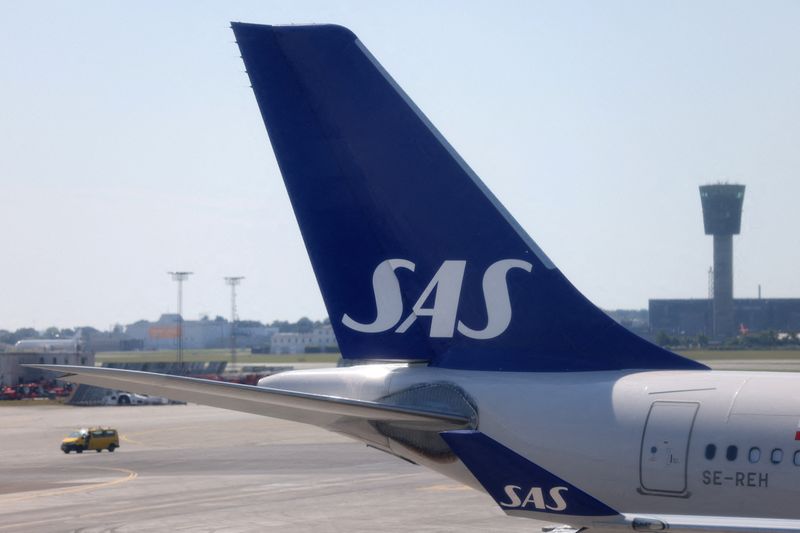(Reuters) - Scandinavian airline SAS has filed for bankruptcy protection in the United States to help cut debt, after wage talks with its pilots collapsed, triggering a strike that adds to travel chaos across Europe. [L1N2YM09P]
Below is some data on SAS restructuring efforts so far, debt, and aircraft leases.
RESTRUCTURING PUSH
The airline, whose biggest owners are the Swedish and the Danish states, said the bankruptcy protection filing was aimed at accelerating a restructuring plan announced in February.
Under the plan, SAS aims to transform its business, including its network, fleet, labour agreements and other cost structures, eying savings of 7.5 billion Swedish crowns ($715 million) a year.
It is also seeking to raise 9.5 billion Swedish crowns in cash and converting 20 billion crowns of debt to equity.
Norway will support the plan to convert debt into equity under certain conditions, its industry minister said at the end of June.
Denmark, which has around 22% stake in SAS, agreed to write off some of SAS's debt and convert some more into equity, as well as to inject new cash. That could increase Copenhagen's stake in the airline to up to 30%. It has made it a condition of the cash injection that SAS gets private investors to participate too.
Sweden, which also has about 22% stake in SAS, said it would not provide new cash to SAS, though it approved the debt-for-equity plan.
If the airline does raise new equity, this will reduce Sweden's stake. The country has said it wants to exit SAS completely in the long term.
DEBT
SAS financial net debt amounted to 29.6 billion Swedish crowns ($2.8 billion) as of April 30.
The carrier said on Tuesday its assessment was that its cash balance of 7.8 billion Swedish crowns was sufficient to meet its business obligations in the near term.
It said discussions with lenders regarding another $700 million of financing to support its operations during the restructuring were "well advanced".
SAS had three fixed income instruments outstanding with a total face value of 5.4 billion Swedish crowns ($519 million).
Its debt is rated Caa3 by Moody's (NYSE:MCO) and CC by Standard & Poor's.
LEASE WOES
SAS Chief Financial Officer Erno Hilden said in the court filing the carrier has not obtained concessions from aircraft lessors on renegotiated lease terms.
"Many of the Company's leases are significantly above market and several are on account of surplus aircraft that no longer fit SAS's streamlined network and route strategies," Hilden said.
The carrier has aimed to cut costs for leased planes that stand idle because of closed Russian airspace and a slow recovery in Asia.
Aviation data firm Cirium said SAS lessors with the highest exposure include CDB Aviation, Jackson Square Aviation and Air Lease (NYSE:AL).
According to Cirium, CDB Aviation's exposure is $486 million, Jackson Square Aviation $271 million and Air Lease $235 million.
SAS leased 59 aircraft as of April 30 and in addition wet-leased a further 33.

($1 = 10.4961 Swedish crowns)
(This story corrects attribution of statement in paragraphs 18 and 19 to CFO rather than CEO and adds dropped figure "million" in paragraph 22)